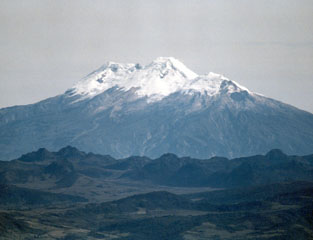Report on Nevado del Huila (Colombia) — 16 June-22 June 2010
Smithsonian Institution / US Geological Survey
Weekly Volcanic Activity Report, 16 June-22 June 2010
Managing Editor: Sally Sennert.
Please cite this report as:
Global Volcanism Program, 2010. Report on Nevado del Huila (Colombia) (Sennert, S, ed.). Weekly Volcanic Activity Report, 16 June-22 June 2010. Smithsonian Institution and US Geological Survey.
Nevado del Huila
Colombia
2.93°N, 76.03°W; summit elev. 5364 m
All times are local (unless otherwise noted)
INGEOMINAS reported that during 9-15 June sulfur dioxide plumes from Nevado del Huila were detected by multiple sources. A distinct change in seismicity was noted on 13 June and was characterized by an increased intensity and a greater number of hybrid earthquakes. These earthquakes were shallow events beneath Pico Central. The Alert Level was raised to II (Orange; "probable eruption in term of days or weeks"). On 16 June two episodes of tremor possibly indicated ash emissions; this was unconfirmed. However, sulfur dioxide plumes were again detected. During 20-21 June small white pulsating fumarolic plumes drifted W.
Geological Summary. Nevado del Huila, the highest peak in the Colombian Andes, is an elongated N-S-trending volcanic chain mantled by a glacier icecap. The andesitic-dacitic volcano was constructed within a 10-km-wide caldera. Volcanism at Nevado del Huila has produced six volcanic cones whose ages in general migrated from south to north. The high point of the complex is Pico Central. Two glacier-free lava domes lie at the southern end of the volcanic complex. The first historical activity was an explosive eruption in the mid-16th century. Long-term, persistent steam columns had risen from Pico Central prior to the next eruption in 2007, when explosive activity was accompanied by damaging mudflows.

